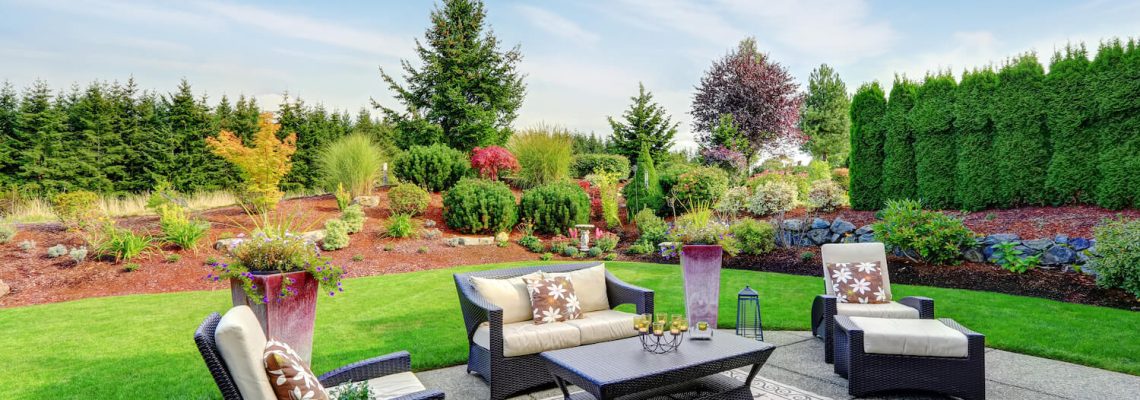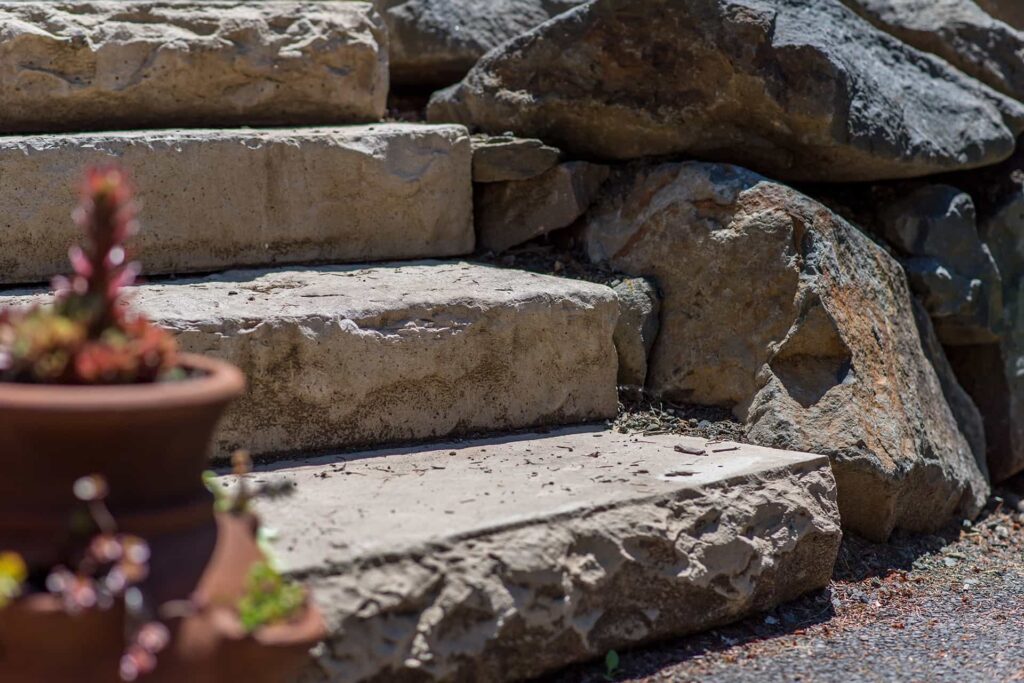When it comes to creating a beautiful and functional outdoor space, hardscaping plays a crucial role. Hardscape materials, such as pavers, stone, concrete, and wood, are the foundation upon which you build your outdoor living area. Choosing the right hardscape materials is essential for achieving the aesthetic and functional goals you have in mind for your outdoor space.
In this article, we will guide you through the process of selecting the right hardscape materials for your outdoor project, whether it’s a patio, walkway, driveway, or any other element of your landscape design.
The Importance of Hardscape Materials
Hardscaping refers to the non-living elements in your landscape design. These elements provide structure and functionality to your outdoor space, creating areas for walking, sitting, dining, and more. The choice of hardscape materials can significantly impact the overall aesthetics, durability, and maintenance requirements of your outdoor area.
- Aesthetics: The appearance of your outdoor space is greatly influenced by the choice of hardscape materials. Different materials offer various textures, colors, and styles that can complement or contrast with the surrounding landscape and your home’s architectural style.
- Durability: Hardscape materials need to withstand the rigors of the outdoor environment. They must endure weather conditions, foot traffic, and potential vehicular use if you’re designing a driveway. Selecting materials that are built to last is essential to ensure your investment stands the test of time.
- Maintenance: Maintenance requirements differ for each hardscape material. Some materials are relatively low-maintenance, requiring occasional cleaning or sealing, while others may demand more frequent care. Understanding the maintenance needs of your chosen materials is crucial for long-term enjoyment of your outdoor space.
- Cost: Your budget is another important factor when selecting hardscape materials. Different materials come at various price points, and it’s essential to find a balance between your design aspirations and your financial constraints.
Now, let’s delve into the steps to help you choose the right hardscape materials for your outdoor space.
Step 1: Define Your Project
The first step in choosing the right hardscape materials is to clearly define your project. What are you looking to create in your outdoor space? Are you planning a patio for outdoor dining and entertaining, a walkway to navigate your garden, or a driveway for your vehicles? The purpose of your project will influence the materials you should consider.
- Patio: If you’re designing a patio, you’ll want materials that are not only durable but also comfortable to walk on and sit on. Options like concrete pavers, natural stone, or wood decking are popular choices.
- Walkway: For a garden path or walkway, you’ll need materials that provide a stable, slip-resistant surface. Concrete pavers, gravel, or flagstone are common choices for walkways.
- Driveway: Driveways require materials that can withstand the weight of vehicles and frequent use. Concrete, asphalt, and interlocking pavers are common choices for driveways.
Defining your project’s purpose and the anticipated use will help you narrow down your material options.
Step 2: Consider Design Aesthetics
The aesthetics of your hardscape materials should harmonize with your overall landscape design and the architectural style of your home. Here are some key factors to consider:
- Color: Choose colors that complement your home and the natural surroundings. For a more natural look, consider earthy tones like brown, gray, or tan. If you want a more vibrant and contemporary appearance, you can explore a wider range of colors.
- Texture: Different materials offer varying textures. Smooth surfaces, like polished concrete or porcelain tiles, create a modern, sleek look, while textured materials, like natural stone or brick, can add a rustic or traditional touch.
- Style: Consider the style you want to achieve. Are you aiming for a formal, modern, traditional, or rustic design? Your choice of materials should align with your desired aesthetic.
- Pattern and Layout: Some materials, like pavers and bricks, allow for intricate patterns and designs. Consider how you want to arrange the materials to create a visually appealing layout.
It’s important to view samples of hardscape materials in person and consider how they will look in your specific outdoor space.
Step 3: Assess Durability and Outdoor Maintenance
The durability of hardscape materials is a critical factor, especially in outdoor environments where they are exposed to weather, UV radiation, and heavy use. Here are some considerations for durability and maintenance:
- Climate: Your local climate plays a significant role in material selection. Some materials may be more suitable for extreme cold or hot climates. For instance, natural stone may be a good choice for a mild climate, while concrete pavers are more durable in areas with freeze-thaw cycles.
- Resistance to Wear and Tear: Consider the anticipated foot traffic and use. High-traffic areas, like driveways, require materials that can withstand the weight and friction of vehicles. Look for materials with a high abrasion resistance rating for such applications.
- Maintenance Requirements: Different materials have varying maintenance needs. Natural stone may require periodic sealing, while concrete pavers are relatively low-maintenance. Consider how much time and effort you are willing to invest in maintaining your hardscape.
- Longevity: Some materials have longer lifespans than others. For example, concrete and brick pavers typically have a longer lifespan than wood decking. It’s important to balance the initial cost of materials with their expected longevity.
By assessing the durability and maintenance requirements of your chosen materials, you can ensure that your outdoor space remains in great condition for years to come.
Step 4: Hardscaping Budget Considerations
Your budget is a practical constraint that can influence your choice of hardscape materials. Some materials are more budget-friendly than others, but it’s essential to consider both the upfront costs and long-term maintenance expenses.
- Initial Costs: The cost of materials varies widely. Natural stone and premium wood decking tend to be more expensive, while concrete and gravel are often more budget-friendly options.
- Installation Costs: In addition to the material costs, consider the installation expenses. Labor costs can vary based on the complexity of your project and the expertise required.
- Long-Term Costs: While a certain material might be more expensive upfront, it could save you money in the long run if it has low maintenance and repair costs. Consider the total cost of ownership, not just the initial investment.
- Prioritize: If your budget is limited, prioritize the key areas of your project where you want to invest in higher-quality materials. For instance, you might choose premium pavers for your patio but opt for a more budget-friendly material for a less-visible walkway.
Balancing your design aspirations with your budget is crucial to achieving a successful outdoor space.
Step 5: Gather Landscape Inspiration and Ideas
To make an informed decision about your hardscape materials, it’s essential to gather inspiration and ideas. Look at outdoor spaces in magazines, online platforms, and even in your neighborhood. Pinterest and Instagram are excellent sources of inspiration for hardscape design.
- Visit Showrooms: Visit local hardscape showrooms and suppliers to see different materials up close. This allows you to touch and feel the textures and view samples in person.
- Consult Professionals: Don’t hesitate to consult with landscape designers or hardscape professionals. They can provide valuable insights and recommendations based on their expertise.
- Online Research: Research online reviews and case studies to learn about the experiences of homeowners who have used the materials you’re considering. This can provide practical insights into how the materials perform in real-world conditions.
By gathering inspiration and seeking advice from professionals and fellow homeowners, you can refine your ideas and make more informed decisions.
Step 6: Sustainability and Eco-Friendliness
In an age where environmental sustainability is increasingly important, it’s wise to consider the eco-friendliness of your hardscape materials. Some materials have a lower environmental impact than others.
- Recycled Materials: Look for hardscape materials made from recycled content. Some pavers and concrete products incorporate recycled materials, reducing their environmental footprint.
- Local Sourcing: Choosing materials that are sourced locally can reduce the carbon footprint associated with transportation. Local materials are often more readily available and can support the regional economy.
- Permeability: Permeable hardscape materials, such as permeable concrete pavers, allow water to pass through, reducing runoff and aiding in groundwater recharge.
- Sustainable Practices: Some manufacturers adhere to sustainable and eco-friendly production practices. Look for materials from companies that prioritize environmental responsibility.
Considering the environmental impact of your hardscape materials can contribute to a more sustainable and responsible outdoor space.
Step 7: Plan for Materials and Installation
The proper installation of hardscape materials is as crucial as selecting the right materials themselves. Improper installation can lead to issues such as settling, uneven surfaces, and premature wear. Consider the following aspects of installation:
- Professional Installation: Depending on the complexity of your project, it may be wise to hire a professional hardscape contractor with experience in the chosen materials.
- Base Preparation: The foundation, or base, on which your hardscape materials are installed is critical. Proper excavation and compaction ensure a stable surface.
- Drainage: Adequate drainage is essential to prevent water pooling or erosion. Ensure that your project includes proper drainage solutions.
- Edge Restraints: Installing edge restraints, like concrete curbing or plastic paver edging, helps maintain the integrity and stability of your hardscape.
- Sealing and Maintenance: Discuss the need for sealing and ongoing maintenance with your installer. Some materials, like concrete pavers, benefit from periodic sealing to protect against staining and wear.
Investing in professional installation and ensuring the correct procedures are followed is key to the longevity and performance of your hardscape.
Step 8: Hardscaping Permits and Regulations
Before you proceed with your hardscape project, be sure to check local building codes and regulations. Some municipalities have specific requirements for hardscape projects, such as permits for large-scale installations or restrictions on materials in certain areas.
- Check Local Regulations: Contact your local planning department or building authority to inquire about permits and regulations related to your project.
- HOA Guidelines: If you live in a community with a homeowners’ association, check their guidelines and restrictions on hardscape materials and design.
- Environmental Regulations: Be aware of any environmental regulations, especially if your project involves altering natural water flow or drainage.
Compliance with local regulations is essential to avoid potential legal issues and ensure a successful project.
Step 9: Maintenance and Care
After your hardscape project is complete, ongoing maintenance and care are necessary to keep it in pristine condition. Different materials require various levels of maintenance. Here are some general maintenance considerations:
- Cleaning: Regularly clean your hardscape materials to prevent the buildup of dirt, grime, and stains. The cleaning method will depend on the material; for example, pressure washing is suitable for many surfaces.
- Sealing: Some materials, like concrete pavers, benefit from periodic sealing to protect against staining and weathering. Follow the manufacturer’s recommendations for sealing frequency.
- Repairs: Address any damage or wear promptly. Cracked pavers, loose stones, or damaged wood should be repaired to prevent further deterioration.
- Weed Control: Keep an eye on weed growth between pavers or in the joints. Use weed barriers or appropriate herbicides to control weeds.
- Winter Care: In cold climates, be prepared to address ice and snow. Use ice melt products that are safe for your hardscape materials, and avoid harsh chemical de-icers.
Maintaining your hardscape materials ensures that your outdoor space remains attractive and functional for years to come.
Conclusion
Selecting the right hardscape materials for your outdoor space is a crucial decision that can greatly impact the aesthetics, functionality, and longevity of your project. By following the steps outlined in this guide, you can make informed choices that align with your design vision, budget, and environmental considerations. Remember that hardscaping is an investment in your property, and choosing the right materials will pay off in the form of a beautiful, enduring outdoor space that you can enjoy for many years.


